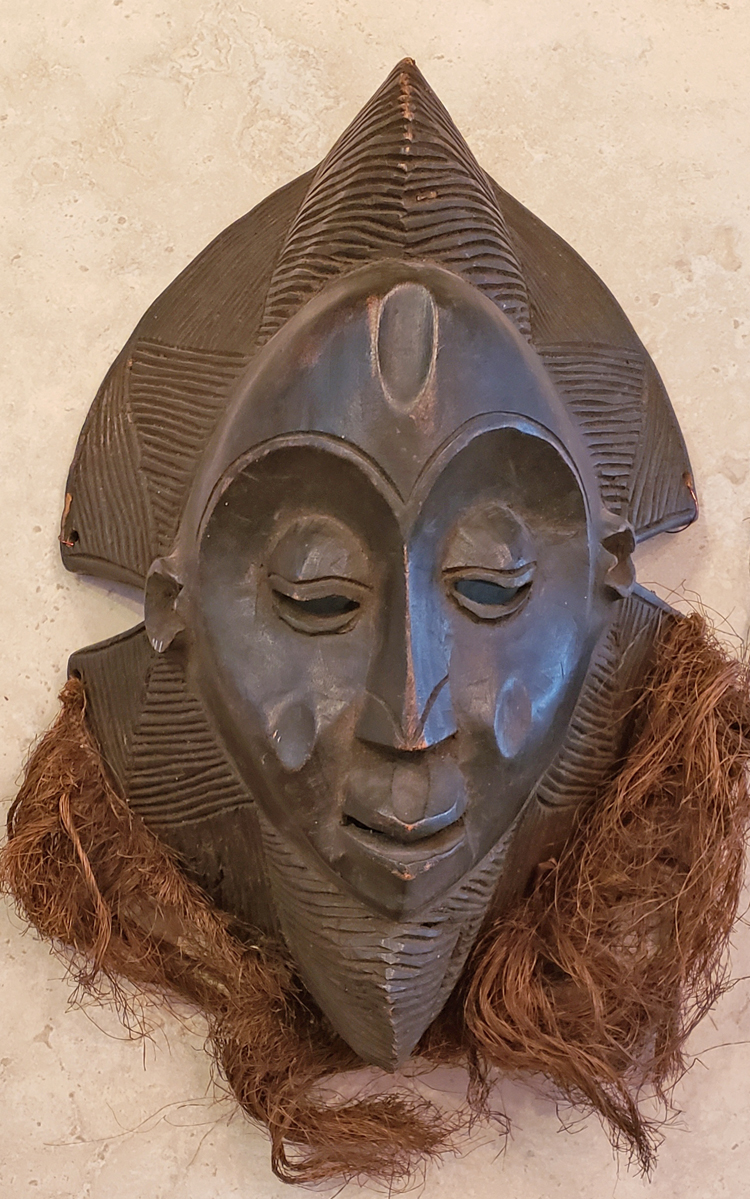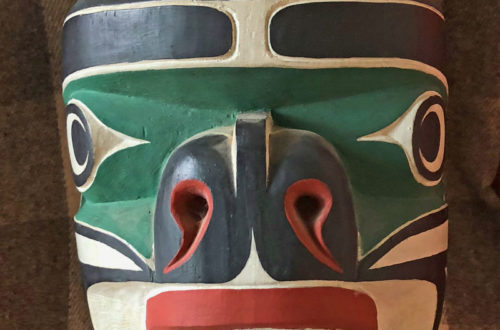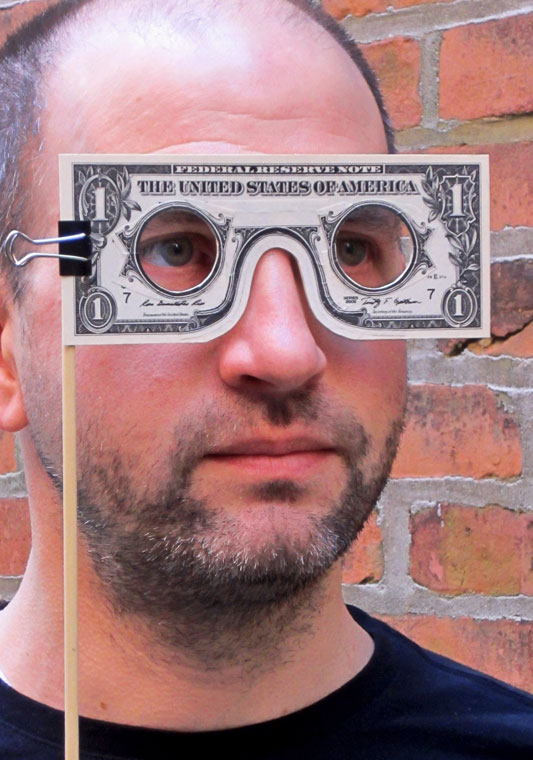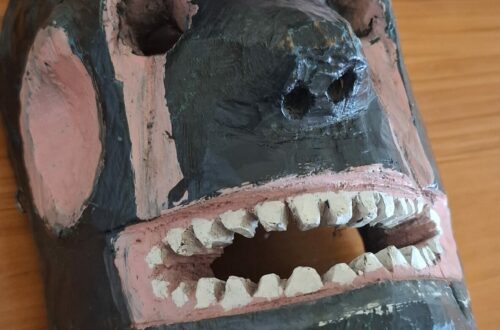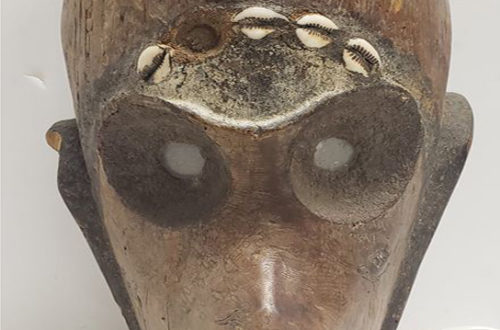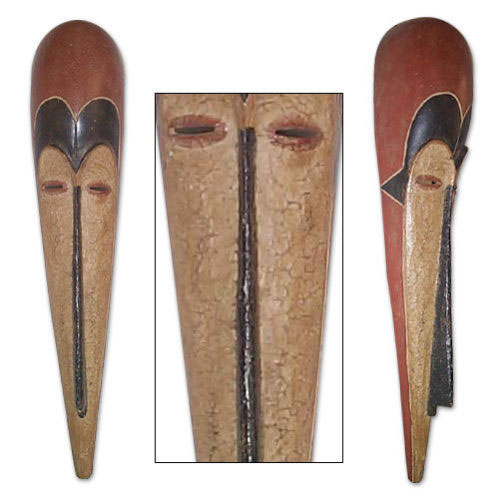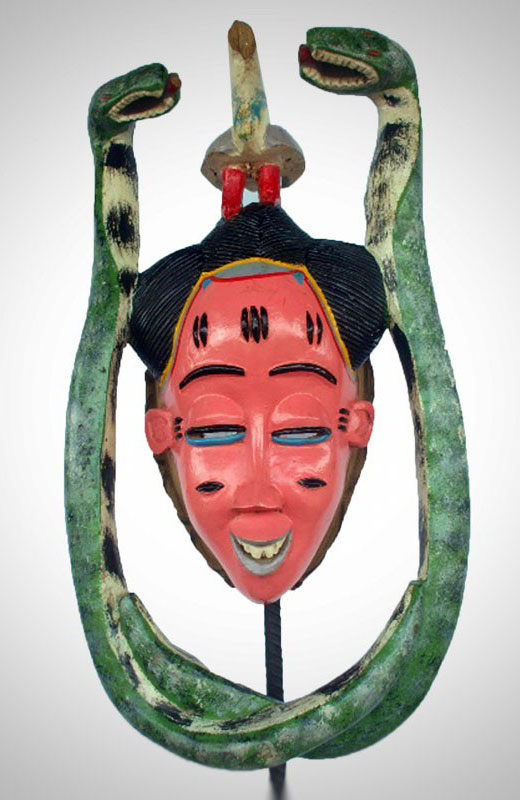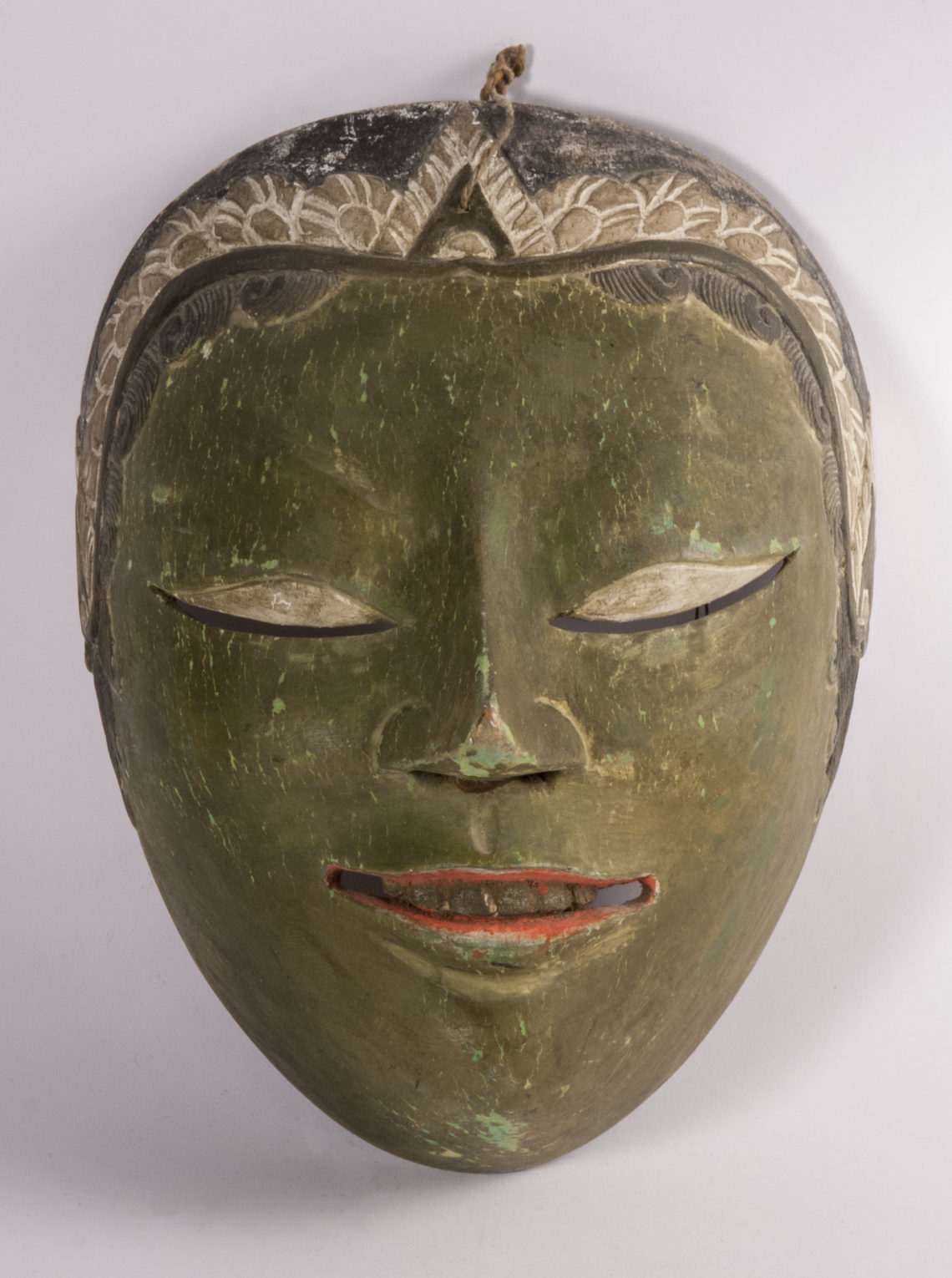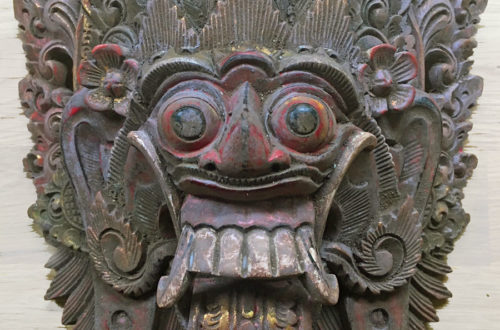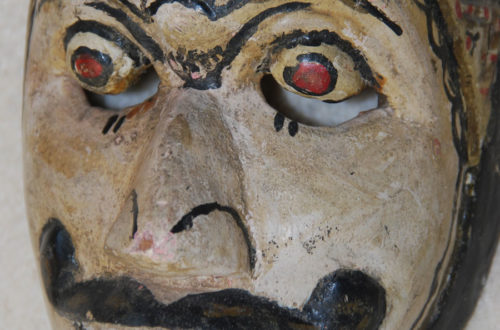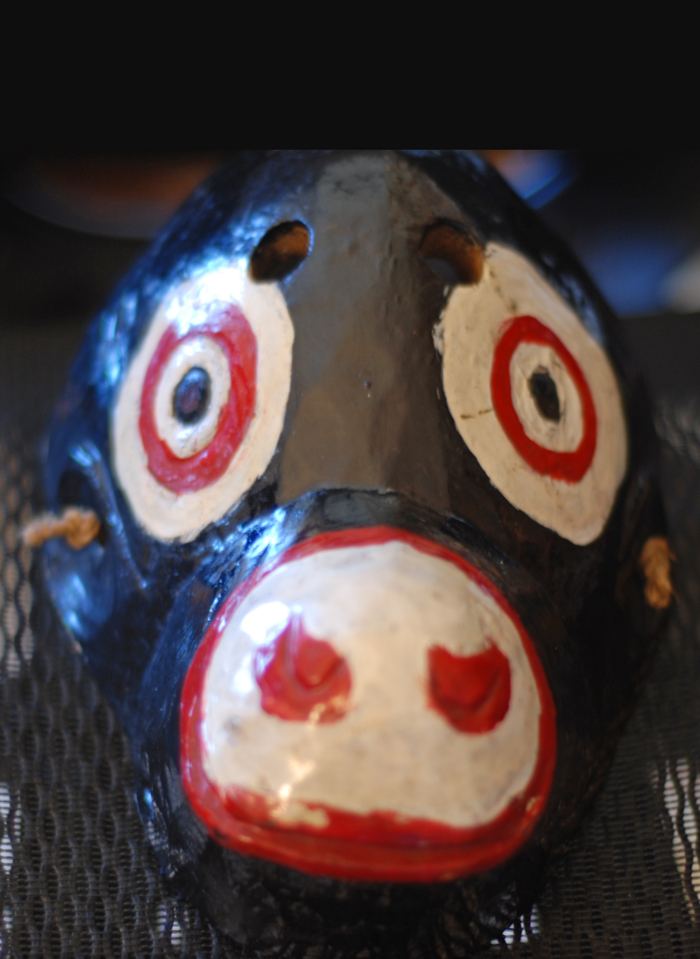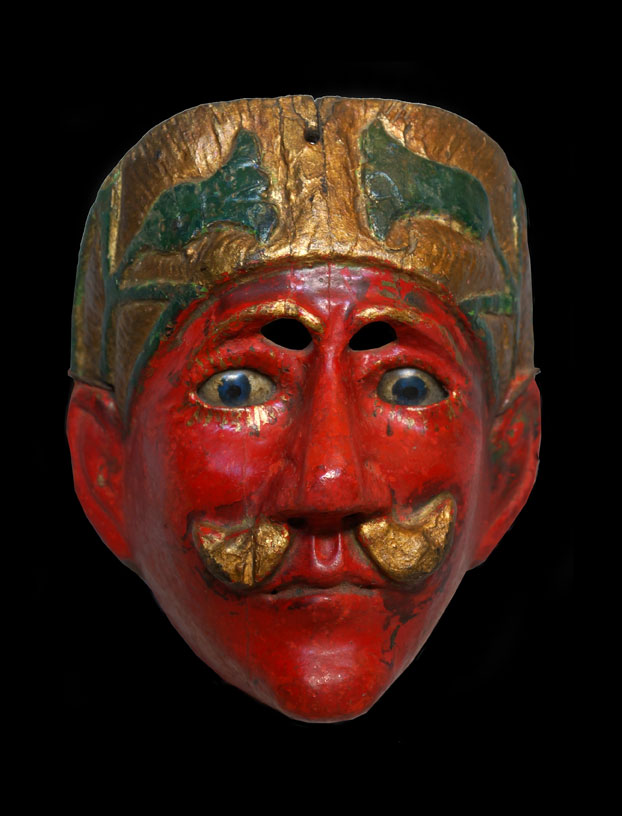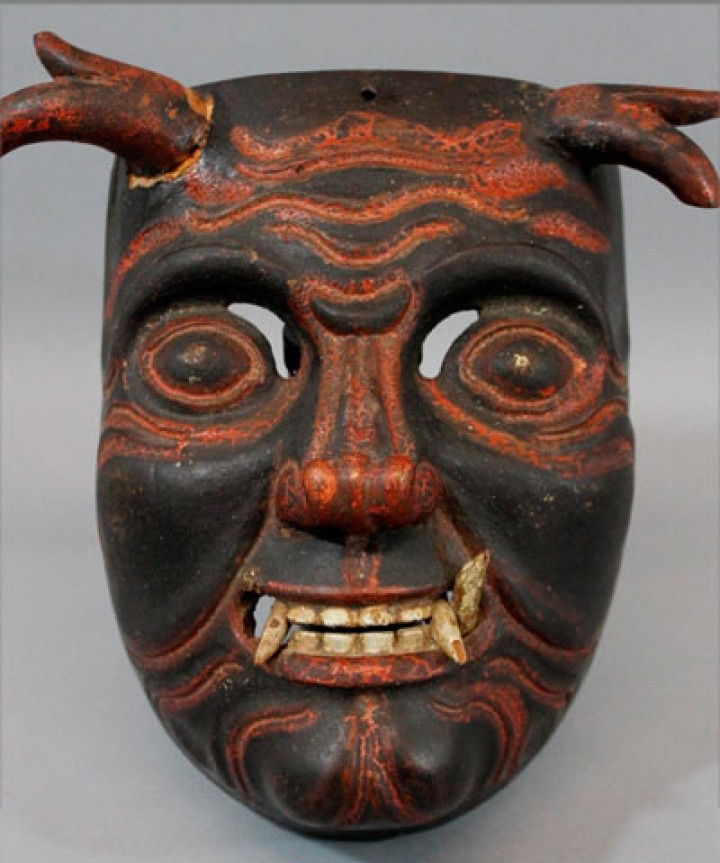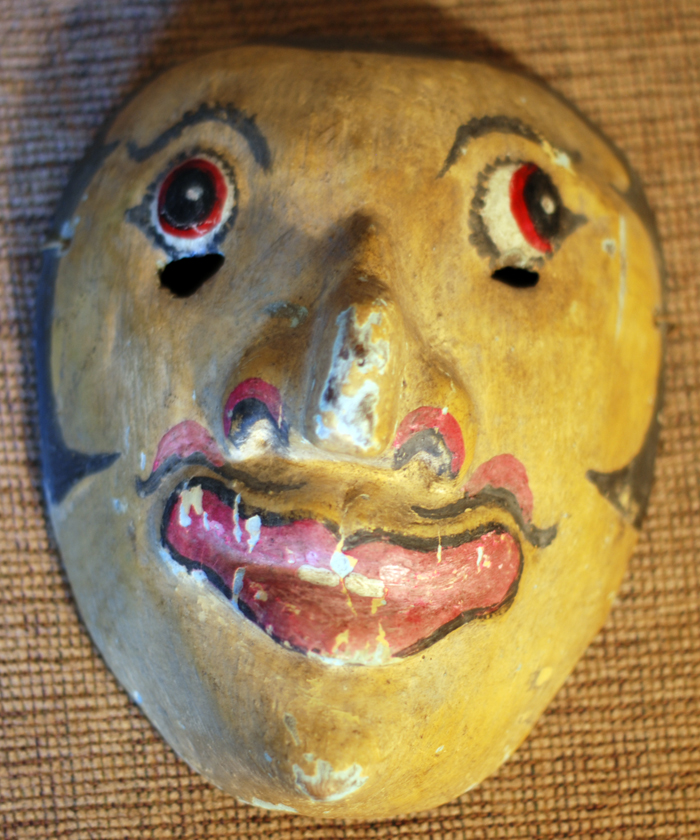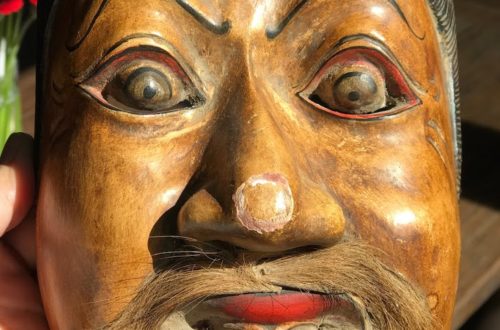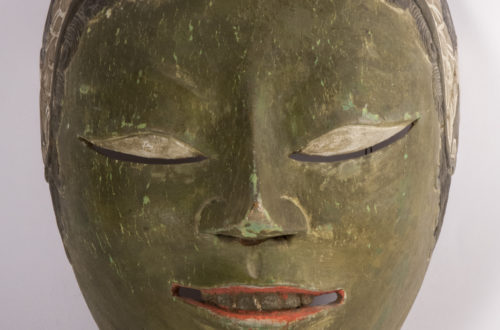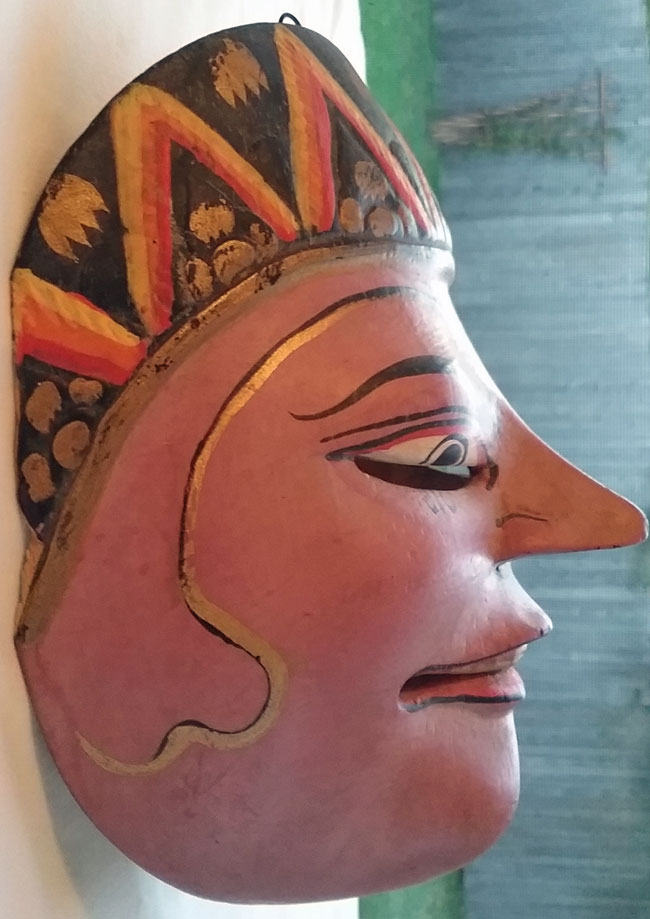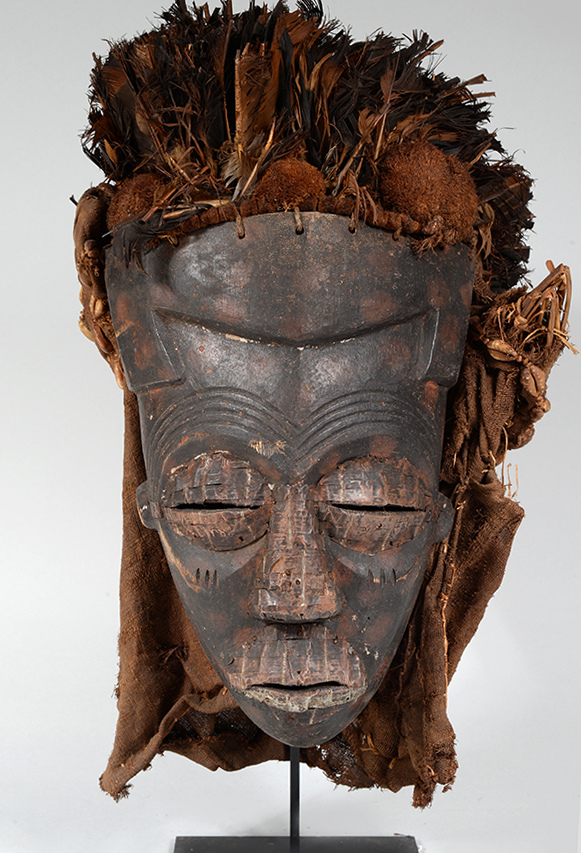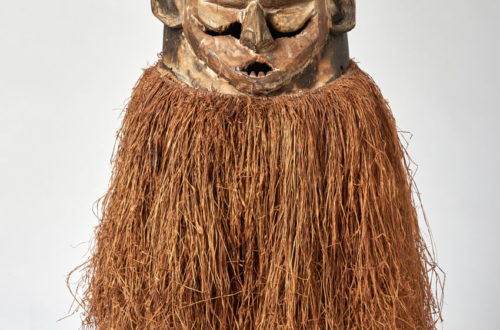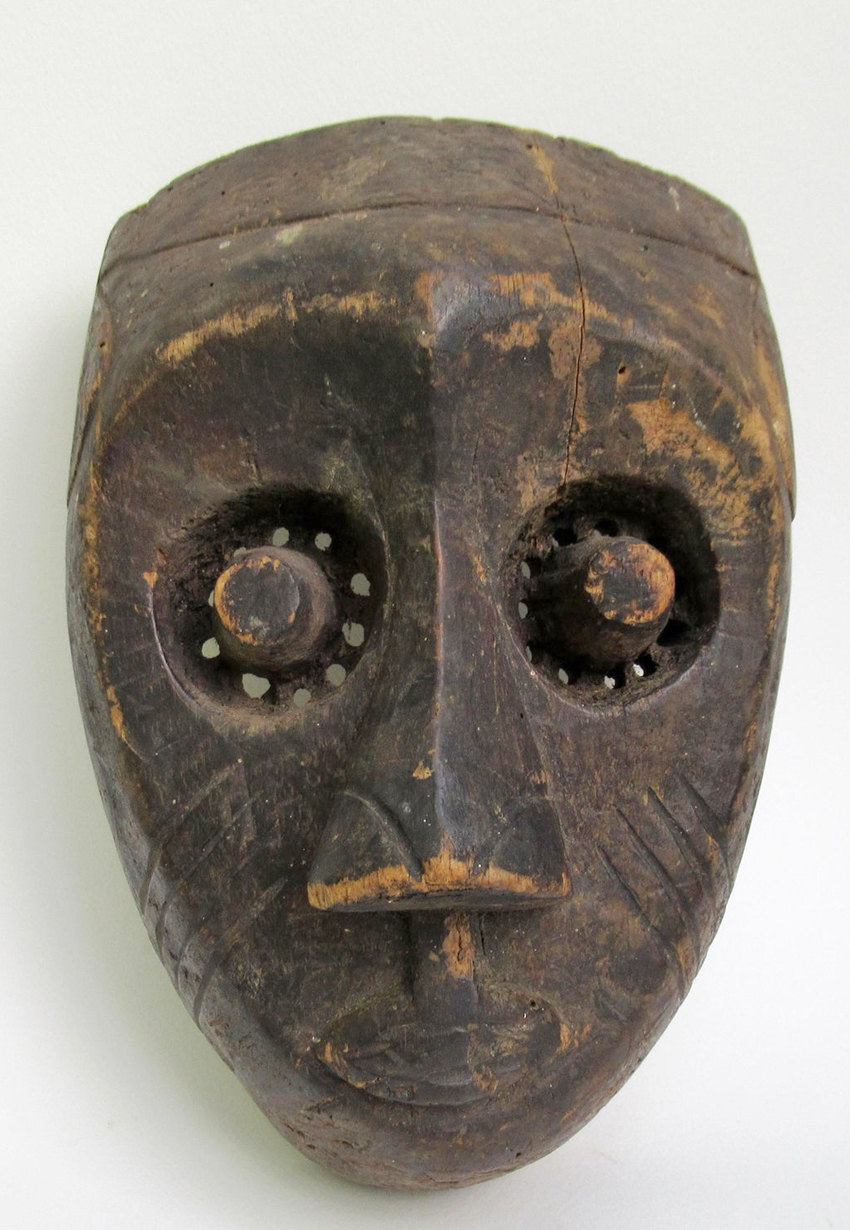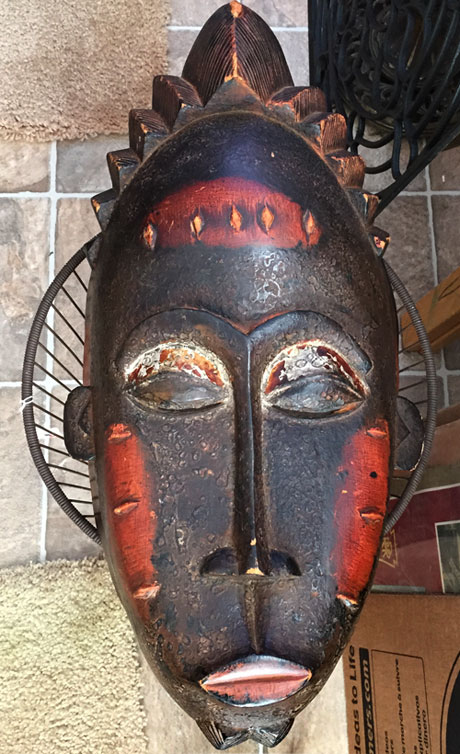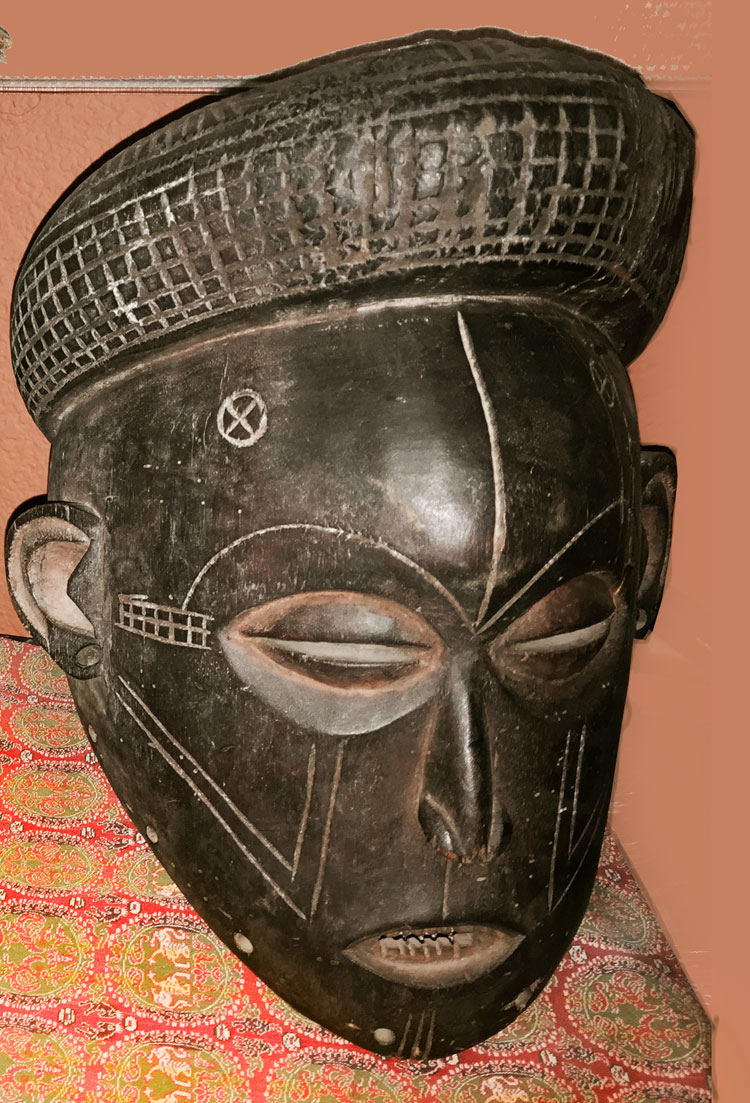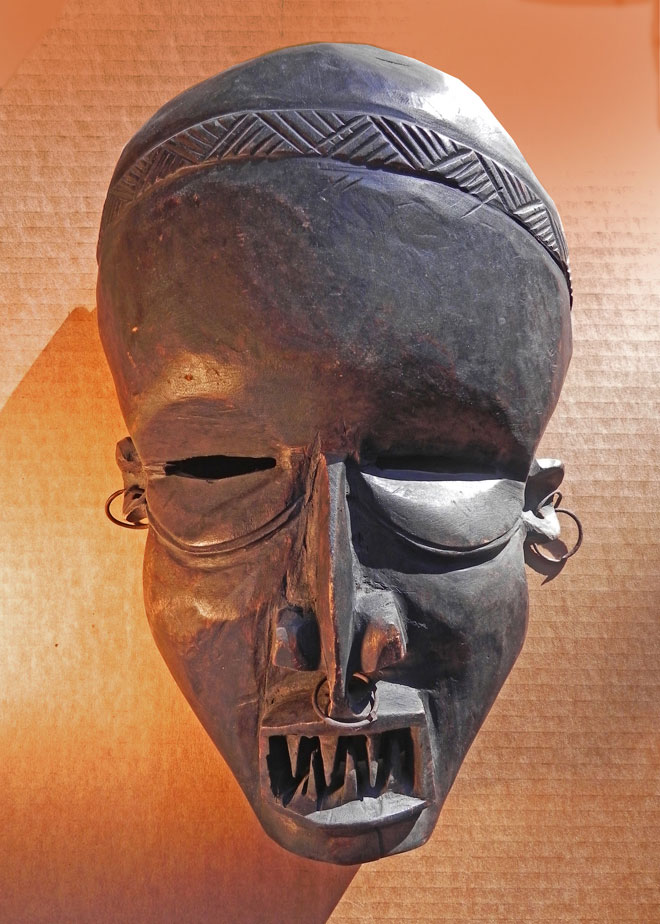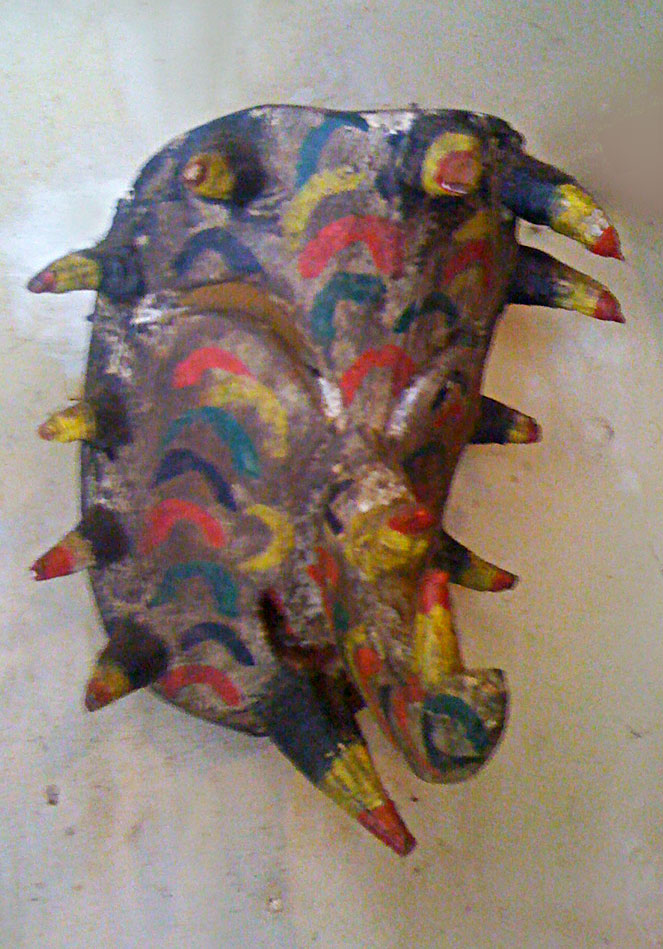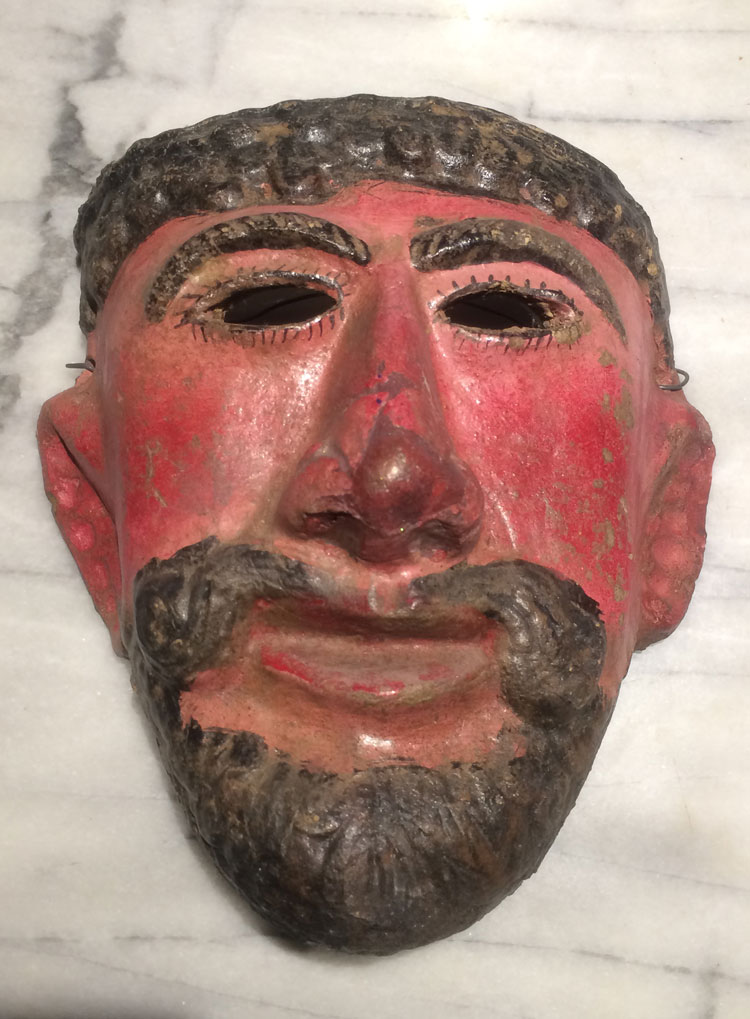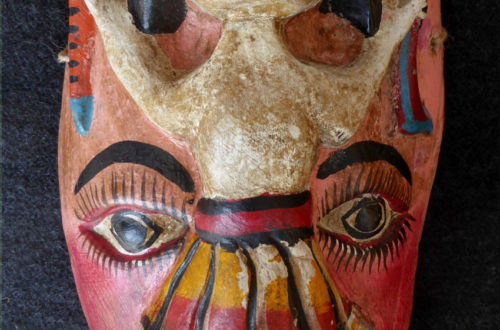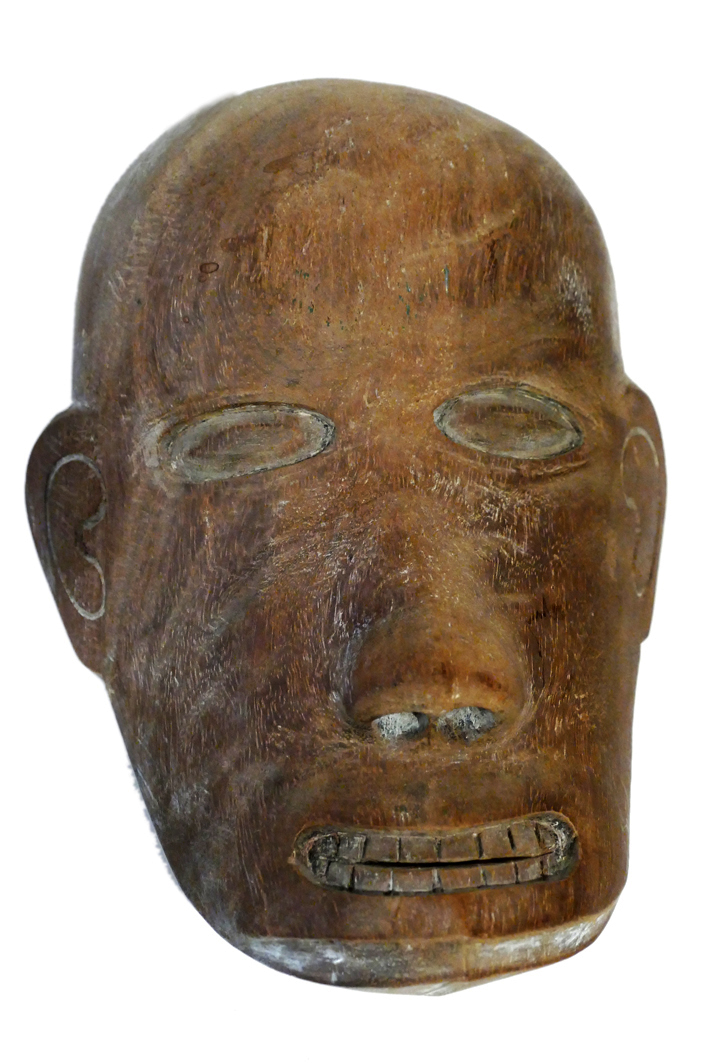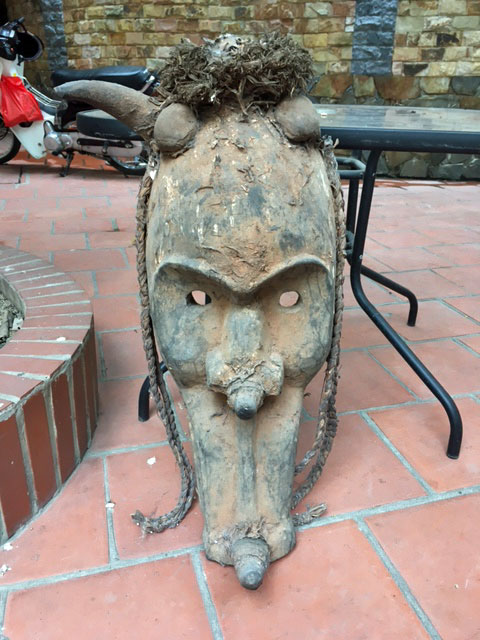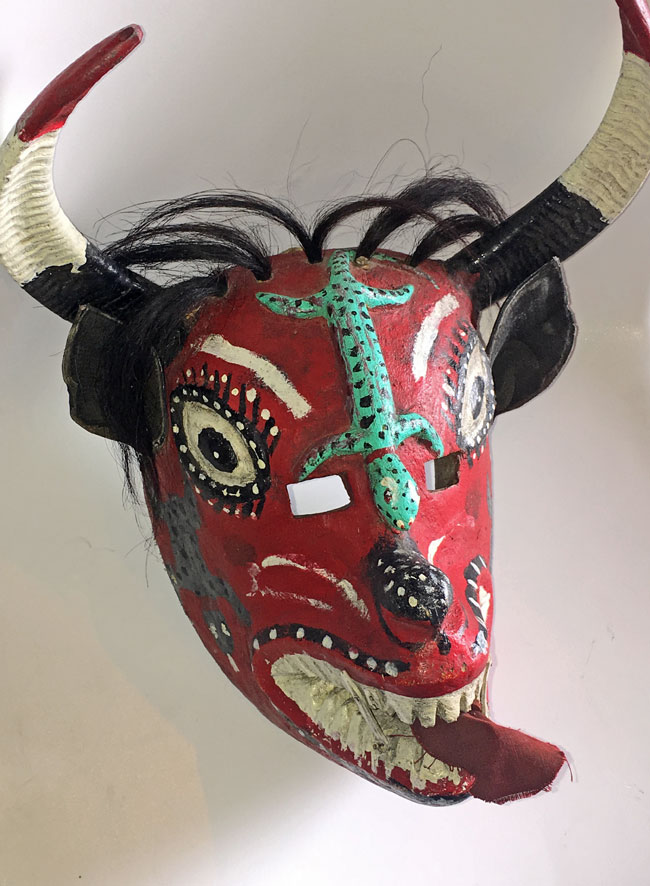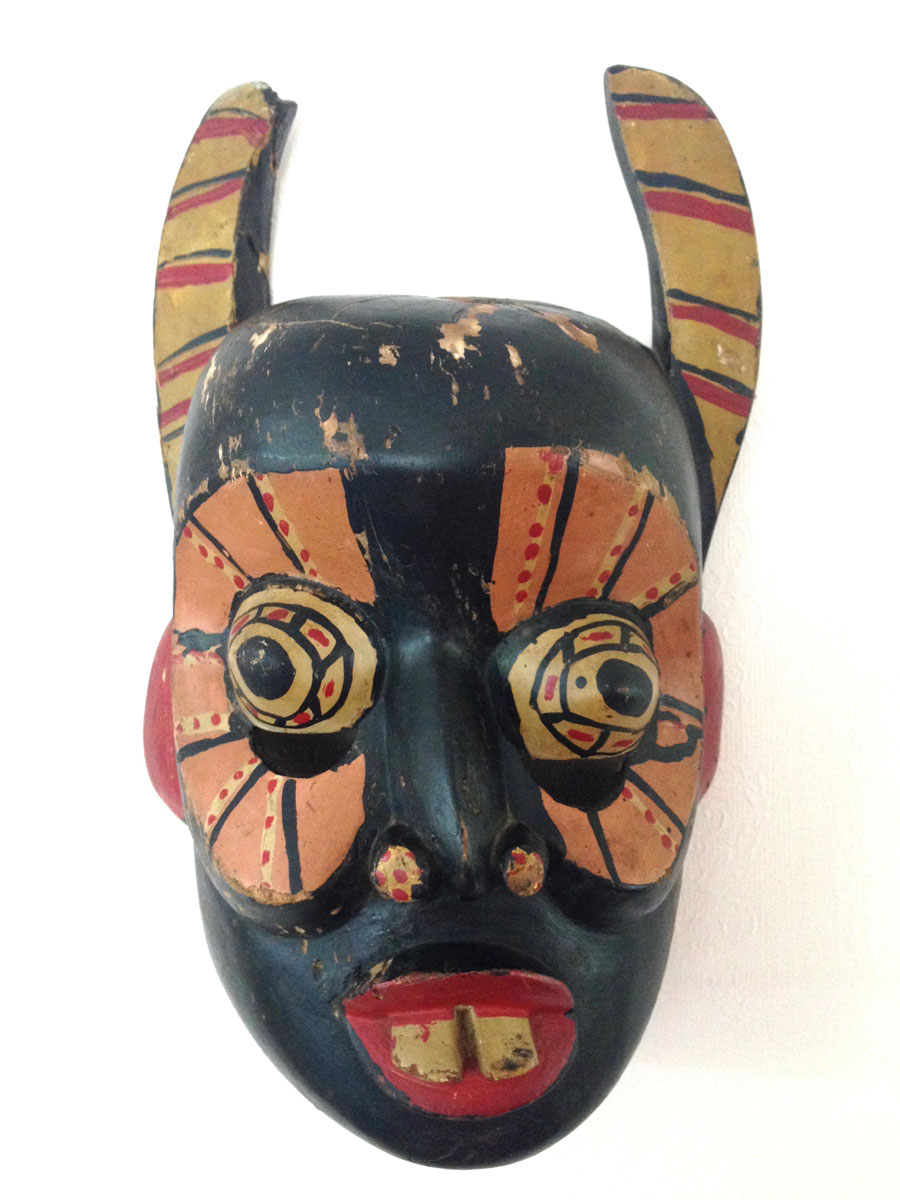Q: I just received this mask as a gift. I was told it came from a collector in Canada, but it looks African to me. Rick, 1650 A: Many of the people who write to the Mask Man have been given a mask, found one, or bought an “old one” cheap. They are usually hoping it will be worth something. I have to disappoint them, hopefully, in a nice way. It would be better the next time if they bought tribal art for beauty rather than value. Other visitors to MasksoftheWorld are collectors and would probably not be interested in today’s blog. Rick has a mask that doesn’t resemble the…
-
-
Rare animal mask from Panama
Q: Would you know more about this straw mask. It reminds me of an African dog mask. Very comfortable to wear. Not sure if it represents a zebra or a monkey. Looking forward to your answer. Paule, 1649 A: I would say this mask was made by Indians from the forests of Panama, possibly the Embera or the Wounaan people. Both tribes often weave animal masks out of the same natural materials they use for baskets. I wish I could tell you what kind of animal it is. Maybe it is some kind of monkey. I hope you keep this rare mask and do some serious research. B+
-
Batshioko mask from Zambia
Q: My mother was an artist who created masks in some of her work. She had some interesting masks which she collected for design inspiration. This one is the most unusual. I’d be interested to know where it is from. Linda, 1648 A: We don’t see these very often. I’m going to assume it’s bark cloth stretched over a frame of bent twigs about 15 inches in height. Probably authentic and about 50 years old. B
-
Newer mask from urban Java
Q: Can anyone offer info on this mask? I’m thinking Javanese/Indonesian, but my knowledge is virtually nil! Phil, 1647 A: Check out the Javanese mask posted four days ago. This Topeng character mask is much more common today. When they come from prosperous communities where professional dancers performer, the masks are more carefully carved and painted than this one. B
-
Guatemalan monkey mask
Q: From reading your previous articles I believe that this is a Guatemalan monkey mask, but that is mostly a guess. The woman who I bought this from for twenty five dollars said that it is something vintage and authentic. It does look used to me, but the paint looks newer. Thank you, Deb, 1646 A: Your mask looks like it was used for awhile and then repainted, which is something the morerias often do to keep their customers happy. The initials “LIC” may be the name of the moreria. It would be nice if you could check this out. I wrote the following on this site on July 11…
-
Character mask from rural Java
Q: I have what I think is an interesting mask. I don’t know the differences between masks from Java and those from Bali though. This one looks authentic because of the signs of wear, patina, and the old leather tab for the dancer’s mouth to hold on to. I got it on eBay for forty bucks. Thanks much. Steve, 1645 A: This is a popular long-nosed character from one of the classic Topeng dance dramas. As you can see, an inch or more of the nose has been broken off. Most of the Javanese masks we see on are very skillfully made in cities, towns and nearby villages. This one…
-
Mystery Kuba mask from Central Africa
Q: I may have a mystery mask for you. The attached was labeled as a Kuba M’boom mask. It may be Kuba, but I doubt it’s a M’boom. I guess it’s possible. The front is partially covered in copper sheet. Do you have any notion what kind of mask it is? Aaron, 1644 A: The only thing that strongly suggests it might be a Kuba M’boom is the forehead area. There is also the possibility of your mask coming from other tribes in the central Congo (DRC) region such as the Lele, Bushoong, Ngeende, and some others. I know, that’s not much help. So let’s hope that sone of our…
-
Pwoom Itok mask of the Kuba
Q: I am just trying to find out actual provenance and the type of mask this was used for, beyond era. I think it looks like a West African mask. Penny, 1643 A: It’s too late for you to get any provenance. But I can tell that it probably comes from the Kuba people of the Democratic Republic of Congo, West Africa. This particular style of masks is used in various ceremonies for young men. The Kuba do not formally worship the creator god. At one time the Kuba had a religion based on ancestor worship, but this seems to have died out, although divination is still practiced in order…
-
Pre-Columbian masks & statues
Q: My fiance just found in his 24 yr old Arizona storage unit what he termed a pre-Columbian figurine that shows the back was broken off some other clay object. He said “it’s the real deal”. It is 3-inches tall. Wondered if I send you pix if you could shed some more light on the authenticity and possible age? Pam, 1642 A: Small fired-clay masks and other sculptural fragments have been turning up at various parts of Meso-America for 100s of years. Often attractive, they can also be of archaeological interest. Eventually some of the skillful locals found they could easily replicate these artifacts and sell them to the rich…
-
Another mystery mask
Q: I was hoping you could tell me anything about the style or origin of this simple wooden tribal mask. I bought it 50 years ago from an antique shop and that’s all I know. Dimensions are 23cm Long, 17.5 Wide and 10cm Deep. The white stuff is only a water based wash I painted on to make it more in keeping with our decor. As to the wood, all I can say is that it is really hard. I appreciate any help you could give me. Many thanks. Patrick, 1641 A: I can’t tell you much about this piece. It is primitive looking, but there are no holes for…
